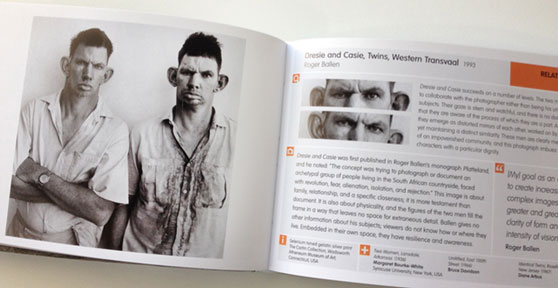
Your feedback and comments are appreciated. See Contact page for e-mails.
Camera Sense Archives

When Photography Really Works
by Val Williams
review by Richard Rivera
All too often photography books are about techniques and tips to improve your picture taking, so it was gratifying to see a book that focuses on the aesthetic, creative, and intuitive aspect of what compels us to create powerful images.
When Photography Really Works covers all manner of styles from photojournalism by Roger Ballen, to Horst’s fashion, Ansel Adams’ landscapes, Eve Arnold’s portraits,
and much more through 80 photographs selected by photo-historian Val Williams.
The photographers are a diverse group including Cartier-Bresson, Weegee, Dorothea Lange, Sebastiāo Salgado, Cindy Sherman, and many others.
The author, Val Williams, examines what happens when “photographs are made with the intention of producing an effective image” regardless of whether the work is photojournalism, fashion, documentary, or fine arts photography. The conclusion is that “photography
is truly successful when it fulfills its purpose, whether the image is destined for the gallery or a magazine,” and “it succeeds most of all when it is memorable.” That is a riddle because every serious photographer desires their work to be remembered, whether they themselves attain fame or not.
The very act of photography is a testament to permanence and wanting to hold onto the moment. The difference perhaps is that some photographers ensure that the desired end result is achieved by paying attention to details that are calculated to make their work memorable, such as staging, location, or an event. Even photographers like Cartier-Bresson or Ernst Hass with a “gift” for capturing the “decisive moment” often waited for the right combination of elements to fortuitously come together. Gift or calculation? You decide.
As to the look and feel of the book, historian Val Williams chooses to focus on the content and power of the images rather than luxuriate in the book’s reproduction, and therefore the book is surprisingly on the small side. Nearly all of the images are printed approximately 4 x 6 inches, but Williams’ comments, and the history of the circumstances surrounding the photographs show erudition and insight that come from making the study of images and photography her life’s work.
Despite the small size of reproduction, the images of When Photography Really Works are engrossing and allow the viewer to delve into the visceral aspect of why one image succeeds while others do not. In fact, one reason why the book succeeds is because the small size of the images creates a sense of intimacy—and viewing them closely at times is more disturbing than pleasant—an intimacy that would not be as effective with a larger format book.
Many of images selected by Williams are “classics” in the sense that they have entered the public consciousness as moments in history. The visceral force of the majority of the images is undeniable, especially when buttressed by quotations of intent from the photographers that reveal the inner workings of motivation. This book is a wonderful addition to any photographic collection and will continue to illuminate the viewer after repeated sittings.
April 17, 2015
APRIL 2015
Book review
iPad software
Movie review
Underwater dual-use camera review
Photo commentary
Book review
PhotoTech commentary
The Interview, movie review
Photo enhancement or management
MAY 2015
Photo Tech commentary
Photo/Art commentary
Camera review
TV series review
JUNE 2015
JULY 2015
AUGUST 2015
SEPTEMBER 2015
OCTOBER 2015
NOVEMBER 2015
DECEMBER 2015
Copyright © 2015 Richard Rivera & Rivera Arts Enterprises All rights reserved. No copying or reproduction of any kind without express written permission from Richard Rivera
Legal Disclosure Camera Sense and Eagles of New York are trademarks of Elk Partners LLC